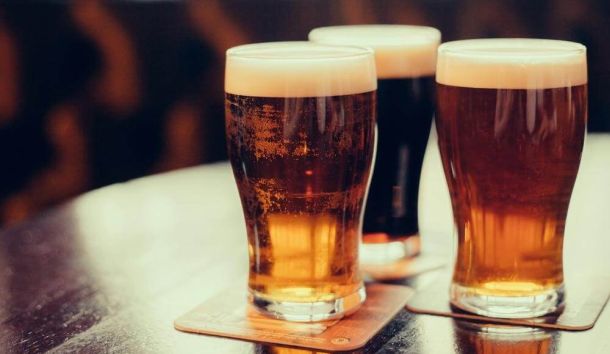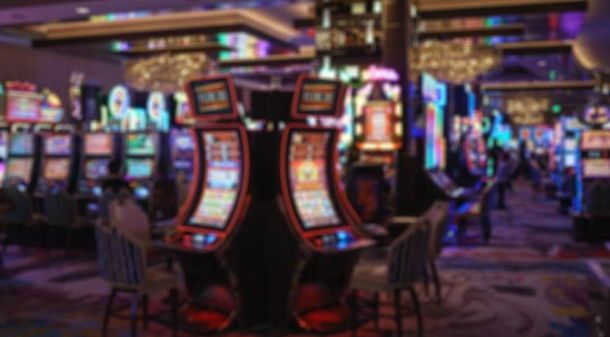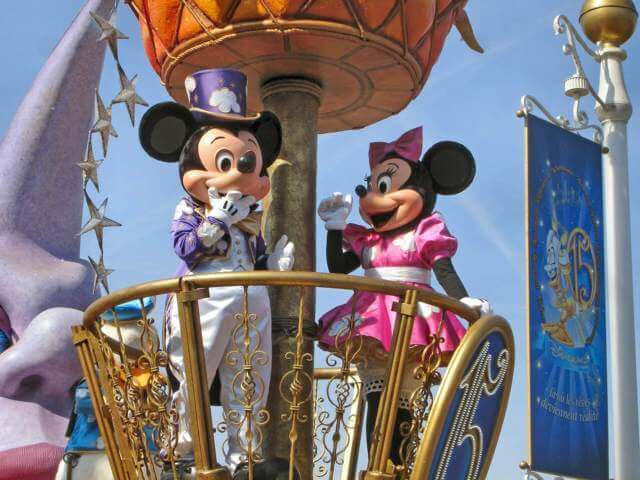8 Big Data Examples Showing The Great Value of Smart Analytics In Real Life At Restaurants, Bars and Casinos
When you think of big data, you usually think of applications related to banking, healthcare analytics, or manufacturing. After all, these are some pretty massive industries with many examples of big data analytics, and the rise of business intelligence software is answering what data management needs. However, the usage of data analytics isn’t limited to only these fields. While data science is a relatively new field, more and more industries are jumping on the data gold rush.
What Are The Best Examples Of Big Data?
The best examples of big data can be found both in the public and private sector. From targeted advertising, education, and already mentioned massive industries (healthcare, manufacturing or banking), to real-life scenarios, in guest service or entertainment.
What’s the motive? Well, as we will explore here, bustling entertainment and hospitality entities including casinos, restaurants, and bars that are embracing the power of digital data, include it in their management reporting practice and predict customer's behaviours and patterns, are reaping the rewards of increased efficiency, improved customer experiences, and ultimately, a significant boost in profits.
While these industries are traditionally slow in adopting new innovations, there are some front-runners that are leading the pack. And while a mere 22% of marketers state that they have a data-driven marketing strategy that is achieving significant results - by leveraging the right insights in the right way, success is inevitable. And when you consider that by the year 2020, 1.7 megabytes of data will be generated every second for every person on the planet, the potential for data-driven organizational growth in the hospitality sector is enormous.
Big data can serve to deliver benefits in some surprising areas. Here, we’ll examine 8 big data examples that are changing the face of the entertainment and hospitality industries, while also enhancing your daily life in the process.
1) Big Data Is Making Fast Food Faster
The first of our big data examples is in fast food. You pull up to your local McDonald’s or Burger King, and notice that there’s a really long line in front of you. You start drumming your fingers on the wheel, lamenting the fact that your “fast food” excursion is going to be anything but, and wondering if you should drive to the Wendy’s a block away instead.
However, before you have time to think about your culinary crisis too deeply, you notice that a few cars ahead of you have already gone through. The line is moving much quicker than expected… what gives? You shrug it off, drive up to the window, and place your order.
Behind the scenes
What you may not have realized is that big data has just helped you to get your hands on those fries and burgers a little bit earlier. Some fast food chains are now monitoring their drive-through lanes and changing their menu features (you know, the ones on the LCD screen as opposed to the numbers on the board) in response. Here’s how it works: if the line is really backed up, the features will change to reflect items that can be quickly prepared and served so as to move through the queue faster. If the line is relatively short, then the features will display higher margin menu items that take a bit more time to prepare.
Now that’s some smart fast food.
2) Self-serve Beer And Big Data

Another great big data example in real life. You walk into your favorite bar. The bartender, instead of asking you, “What’ll you have?” hands you a little plastic card instead.
“Uhhh… what’s this?” you ask. He spreads his hands. “Well, the folks upstairs wanted to try out this new system. Basically, you pour all your own beer – you just swipe this card first.”
Your eyebrows raise. “So, basically, I am my own bartender from now on?”
The bartender snorts and shakes his head. “I mean, I’ll still serve you if you’d like. But with this system, you can try as little or as much of a beer as you want. Want a quarter glass of that new IPA you’re not sure about? Go right ahead. Want only half a glass of stout because you’re a bit full from dinner? Be my guest. It’ll all get automatically added to your tab and you pay for it at the end, just like always.”
You nod, starting to get the picture. “And if I want to mix two different beers together… ”
“No,” the bartender says. “Never do that.”
Behind the scenes
You might think this scenario is from some weird beer-based science fiction book, but in reality, it’s already happening. An Israeli company by the name of Weissberger has enabled self-serve beer through two pieces of equipment:
- “Flow meters” which are attached to all the taps/kegs in the bar
- A router that collects all this flow data and sends it to the bar’s computer
By using this system, a lot of cool things can be made possible. For example, you can let customers pour their own beer in a “self-serve” style fashion. However, there are other profitable possibilities as well that come from the use of big data. Bar owners can use these flow meters to see which beers are selling when, according to the time of day, the day of the week, and so on. Then, they can use this data to create specials that take advantage of customer behavior.
They can also use this data to:
- Order new kegs at the right time, since they know more accurately how much beer they are serving
- See if certain bartenders are more “generous” with their pours than others
- See if certain bartenders are giving free pours to themselves or their buddies
An article titled “Using Big Data to Brew Profits One Pint at a Time” showcases the results. In Europe, the brewing company Carlsberg found that 70% of their beer sold in city bars was bought between 8-10 pm, while only 40% of their beer sold in suburban bars was bought in that time period. Using this data, they could develop market-specific prices and discounts.
Carlsberg also found that when customers were given a magnetic card and allowed to self-pour beer, they ended up consuming 30% more beer than before. This increased consumption came from customers trying small amounts of beer that they wouldn’t have bought before when they were limited to buying a full pint or larger.
3) Consumers Are Deciding The Overall Menu
Have you ever seen one of those marketing campaigns companies use where consumers help them “pick the next flavor?” Doritos and Mountain Dew have both used this strategy with varying levels of success. However, the underlying philosophy is sound: let the customers pick what they want, and supply that!
Well, big data is letting customers speak even more directly (without having to go to a web page). An article titled “The Big Business of Big Data” examines some of the possibilities.
Behind the scenes
One of our big data analytics examples is that of Tropical Smoothie Cafe. In 2013, they took a slight risk and introduced a veggie smoothie to their previously fruit-only smoothie menu. By keeping track of their data, Tropical Smoothie Cafe found that the veggie smoothie was soon one of their best sellers, and they introduced other versions of vegetable smoothies as a result.
Things get deeper: Tropical Smoothie Cafe was able to use big data to see at what times during the day consumers were buying the most vegetable smoothies. Then, they could use time-specific marketing campaigns (such as “happy hours”) to get consumers in the door during those times.
4) Big Data Makes Your Next Casino Visit More Fun

Another interesting use of big data examples in real life is with casinos. You walk into the MGM Grand in Las Vegas, excited for a weekend of gambling and catching up with old friends. Immediately, you notice a change. Those slot machines that you played endlessly on your last visit have moved from their last spot in the corner to a more central location right at the entrance. Entranced by fond memories of spinning numbers and free drinks, you walk right on over.
Behind the scenes
“Our job is to figure out how to optimize the selection of games so that people have a positive experience when they walk through the door… We can understand how games perform, how well they’re received by guests and how long they should be on the floor.”
This quote is from Lon O’Donnell, MGM’s first-ever director of corporate slot analytics. An article titled “Casinos Bet Large with Big Data” expands on how MGM uses data analysis tools to measure performance and make better business decisions. Think about business from a casino’s point of view for a moment. Casinos have an interesting relationship with their customers. Of course, in the long run, they want you to lose more money than you win – otherwise, they wouldn’t be able to make a profit. However, if you lose a large amount of money in any one visit, you might have such a bad experience that you stop going altogether… which is bad for the casino. On the flip side, they also want to avoid situations where you “hit it big”, as that costs them a lot of money.
Basically, the ideal situation for a casino is when you lose more than you win over the long run, but you don’t lose a horrendous amount in any one visit. Right now, MGM is using big data to make sure that happens. By analyzing the data from individual slot machines, for example, they can tell which machines are paying out what, and how often.
They can also tell things like:
- Which machines aren’t being played and need to be replaced or relocated
- Which machines are the most popular (and at what times)
- Which areas of the casino pull in the most profits (and which areas need to be rearranged)
5) We Missed You!
This particular real-life data example applies to restaurants. Imagine this: you’re relaxing at home, trying to decide which restaurant to eat at with your spouse. You live in NYC and work long hours, and there are just so many options. The decision is taking a bit longer than it should; you’ve had a long week and your brain is fried.
Suddenly, an email arrives in your inbox. Delaying your food choices for a moment (and ignoring the withering glare of your spouse as you zone out of the conversation) you see an email from Fig & Olive, your favorite Mediterranean joint that you were a regular at but haven’t been able to visit in more than a month. The subject line says “We Miss You!” and when you open it, you’re greeted with a message that communicates two points:
- Fig & Olive is wondering why you haven’t been in for a while.
- They want to give you a free order of crostini because they just miss you so much!
“Honey”, you exclaim, “I know where we’re going!”
Behind the scenes
The 7-unit NY-based Fig & Olive has been using guest management software to track their guests ordering habits and to deliver targeted email campaigns. For example, the “We Miss You!” campaign generated almost 300 visits and $36,000 in sales – a 7 times return on the company’s investment into big data.
6) The MagicBand
The MagicBand is almost as whimsical as it sounds as it’s a data-driven innovation that’s been pioneered by the ever-dreamy Disneyland.
Now, imagine visiting a Disneyland park with your friend, partner, or children and each being given a wrist device on entry - one that provides you with key information on queuing times, entertainment start times, and suggestions tailored for you by considering your personality and your preferences. Oh, and one of your favorite Disney mascots greeting you by name. It would make your time at the park all the more, well, magical, right?
Enter MagicBand.
Behind the scenes
With an ever-growing roster of adrenaline-pumping rides, refreshment stands, arcades, bars, restaurants, and experiences within its four walls - and some 150 million people visiting its various parks every year - this hospitality brand uses big data to enhance its customer experience and remain relevant in a competitive marketplace.
Developed with RFID technology, the MagicBand interacts with thousands of sensors strategically placed around its various amusement parks, gathering colossal stacks of big customer data and processing it to not only significantly enhance its customer experience, but gain a wealth of insights that serve to benefit its long-term business intelligence strategy, in addition to its overall operational efficiency - truly a big data testament to the power of business analytics tools in today’s hyper-connected world.
7) Checking In And Out With Your Smartphone
These days, a great deal of us humans are literally glued to our smartphones. While once solely developed for the making and receiving of calls and basic text messages, today’s telecommunication offerings are essentially miniature computers, processing streams of big data and breaking down geographical barriers in the process.
When you go to a hotel, often you’re excited, meaning you’ll want to check into your room, freshen up and enjoy the facilities, or head out and explore. However, sluggish service and long queues can end up seriously eating into your time. Moreover, once you have made it past the check-in desk, you run the risk of losing your key - creating a costly and inconvenient nightmare.
That said, what if you could use your smartphone as your key, and what if you could check-in and out autonomously, order room service and pre-order drinks and services through a mobile app. Well, you can at Hilton hotels.
Behind the scenes
At the end of 2017, the acclaimed hotel brand rolled out its mobile key and service technology to 10 of its most prominent UK branches, and due to its success, this innovation has spread internationally and will be included in its portfolio of 4,000 plus in the near future. In addition to making the hotel hospitality experience more autonomous, the insights collected through the application will help make the hotel’s consumer drinking and dining experience more bespoke.
This cutting-edge big data example from Hilton highlights the fact that by embracing the power of information as well as the connectivity of today's digital world, it’s possible to transform your customer experience and communicate your value proposition across an almost infinite raft of new consumer channels.
And, as things develop, we expect to see more hotels, bars, pubs and restaurants utilizing this technology in the not so distant future.
8) A Nostalgic Shift
Amusement arcades were all the rage decades ago but due to the evolution of digital gaming, many traditional entertainment centers outside the bright lights of Sin City simply couldn’t compete with immersive consoles, resulting in a host of closures.
But with a sprinkling of nostalgic and the perfect coupling of old and new you might have noticed that the amusement arcade is having somewhat of a renaissance. It seems that those who grew up in a time where arcades reigned supreme are craving a nostalgic trip down memory lane, taking their children for good old retro family experiences. You might have also noticed, if you’re one of those people, that while there are all of the offerings you remember as a child, there are a sprinkling of cutting-edge new amusements and tech-driven developments that make the whole experience more fun, fluid, and easy to navigate.
Behind the scenes
A shining example an amusement arcade chain that has stood the test of time is an Australian brand named Timezone.
By leveraging the big data available to the business, Timezone gained invaluable insights on customer spending habits, visitation times, preferred amusement and geographical proximity to their various branches. By gathering this information, the brand has been able to tailor each branch to its local customers while capitalizing on consumer trends to fortify its long-term strategy.
Speaking to BI Australia, Timezone’s Kane Fong, explained:
“By leveraging the big data available to the business, Timezone gained invaluable insights on customer spending habits, visitation times, preferred amusement and geographical proximity to their various branches. In gathering this information, the brand has been able to tailor each branch to its local customers while capitalizing on consumer trends to fortify its long-term business strategy.”
Big data is changing the way we eat, drink, play and gamble in ways that make our lives as consumers easier, more personal, and more entertaining.
What’s even more amazing is that we’re only at the beginning of the adoption of big data in the hospitality and entertainment industries. And as we as humans evolve the way we gather, organize, and analyze data, more incredible examples of big data will emerge in the near and distant future. We are living in exciting times.
For more mind-blowing of big data application examples in real-world situations, explore our insights into big data in healthcare, logistics, and even in American football.

Nhận xét
Đăng nhận xét